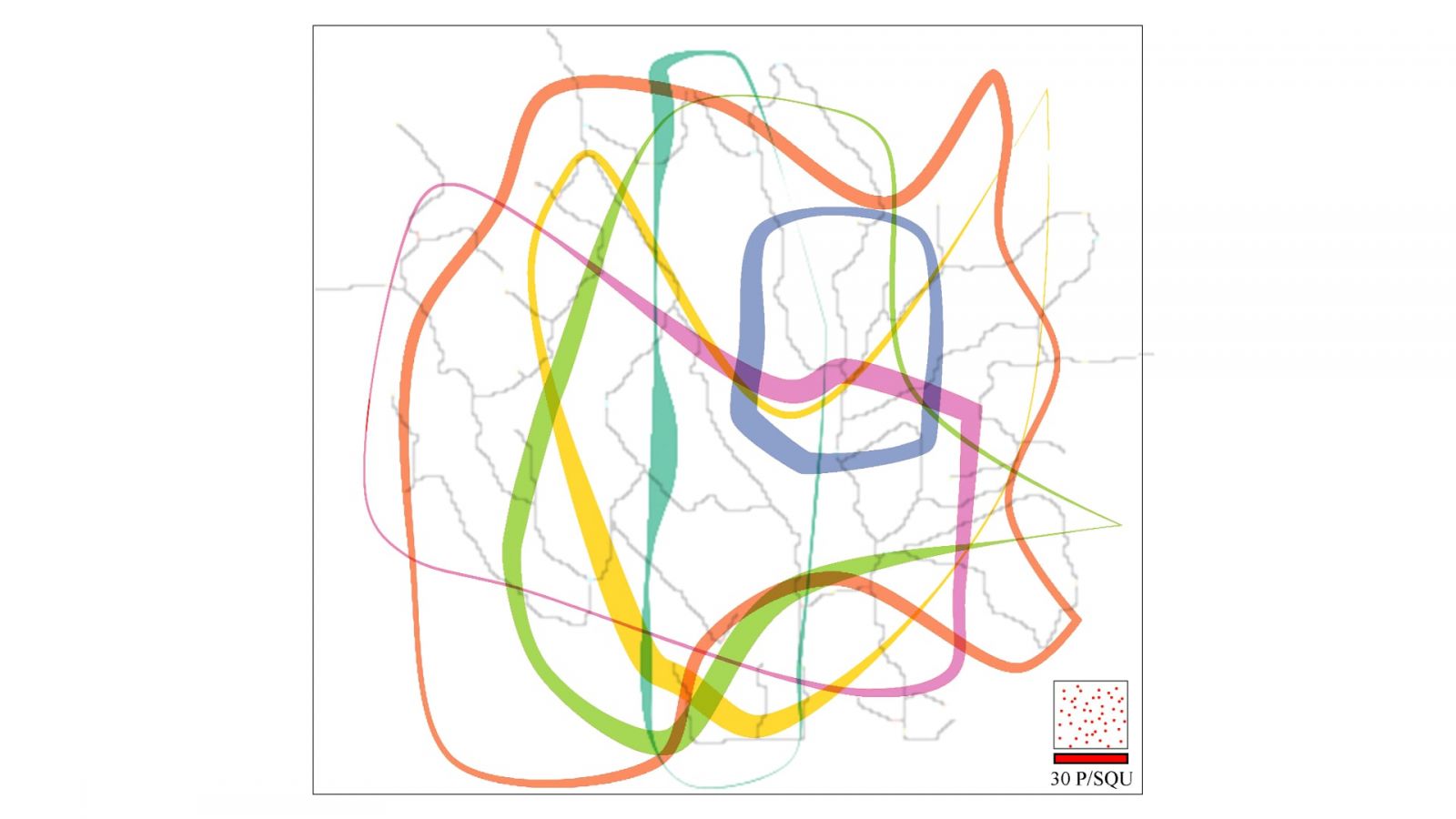
A new technique being developed by Purdue Polytechnic’s Yingjie “Victor” Chen and his research team could make visualization of big spatial data sets easier and more concise.
Conventional techniques like heat maps, which represent data graphically as a matrix of colors, can make it nearly impossible to categorize and compare data when many different types of objects are involved, such as planning resources for a city or tracking enemy locations for military strategy.
 “We created a simple way to overlay multiple layers on top of each other to make comparisons in distributions easier,” said Chen, associate professor of computer graphics technology. “Our experiments have shown that this technique is intuitive and easy for a user to understand the information being shown.”
“We created a simple way to overlay multiple layers on top of each other to make comparisons in distributions easier,” said Chen, associate professor of computer graphics technology. “Our experiments have shown that this technique is intuitive and easy for a user to understand the information being shown.”
The Purdue visualization technique uses a specially designed algorithm that incorporates information about thickness, density and boundaries tied to data points, Chen said. Objects can be grouped by type or time, allowing users to see changes in distributions over time.
“Data visualization continues to be a growing field,” said Chen. “Our technique could be used to study nature phenomena, track political affiliations within a geographic region and many other areas where data can help in comparison and future planning.”
Chen and his students worked with Zhenyu Cheryl Qian, associate professor of interaction design in Purdue’s College of Liberal Arts, to create their “abstract visualization of spatial distributions” technique. The researchers worked with the Purdue Research Foundation Office of Technology Commercialization to patent the technology.
Read the full Purdue Research Foundation story.
Additional information:
- Don’t bring the heat: New visualization technique offers alternative to heat maps to track spatial data sets (Purdue Research Foundation)
- Abstract Visualization of Spatial Distributions
- CGT professor’s dynamic visualizations aid coordination of Peruvian environmental study
- Grant to aid CGT professor's research in cryo-electron microscopy training
